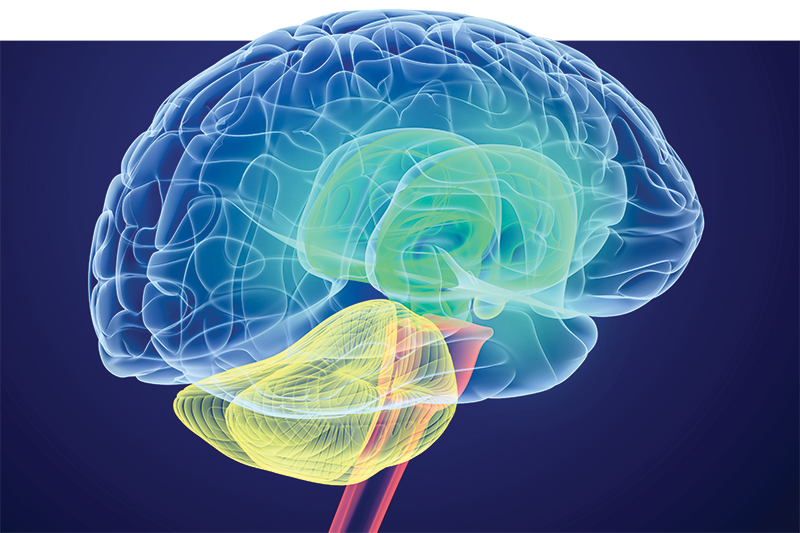Are mental health and psychological problems on the rise? Having been in practice for 44 years and evaluating and treating over 15,000 patients, I would have to respond with an overwhelming “yes.” In today’s world, 11% (3:1 boys over girls) are diagnosed with ADHD, 2.5% with autism spectrum (4:1 boys over girls), and 10–15% (more boys than girls) with dyslexia. Yes, 1 in 4 children today have some neurodevelopmental challenges. There is much speculation about why these numbers are increasing, but I’ll save that for another day. The main takeaway here is that these conditions can be improved and often resolved in several months with appropriate treatment.
There are three common denominators with all these diagnoses – ADHD, OCD, ODD, tics, Tourette’s, autism, dyslexia, anxiety, depression, and insomnia.
Primitive Reflexes
Primitive reflexes develop in utero and are designed to help facilitate the birthing process and movement in early life. There are 10 main primitive reflexes that typically go away by 12 months. When they do not, it signals that there was a lack of proper neurodevelopmental maturation in the brain stem.
The brain stem is to the brain as the foundation is to a house. All neurological systems develop in a stacking system on top of the brain stem. The cerebellum, the balance/vestibular system, and the oculomotor/eye tracking systems are much like the floor and walls of the house. On top is the pre-frontal cortex and cortex in the brain as the roof is on the house. When the foundation of the house is cracked and shifts, the floor slopes, and the walls crack. When the brain stem is immature, there are often problems with the balance/vestibular system, oculomotor/eye tracking system, and other sensory systems. Level floors and walls are necessary to create a level ceiling and roof. When sensory systems are not functioning properly, misinformation is fed into the pre-frontal cortex. This is the area of the brain where our decision-making comes from.
Retained primitive reflexes from an immature brain stem are associated with chronic negative neurobehavior and will not self-correct as we age without specific sensory-motor input. The brain stem is also where the vagus nerve originates. The vagus nerve is connected to all the organs in the body and controls 75% of the parasympathetic nervous system, or the “rest and digest” part of our nervous system. It is the calming, down-regulating part of our nervous system. Therefore, individuals with primitive reflexes are sympathetic, or “fight/flight” dominant. Do we start to understand why anxiousness is so common?
Hemispheric Imbalance
When there are primitive reflexes and an immature brain stem, there will be an asymmetrical hemispheric brain development, with one side growing stronger than the other. This creates a functional disconnection syndrome. The left and right hemispheres should have a yin/yang relationship, one balancing the other. However, if one side is too strong it stops listening to the weaker side. Therefore, all mental health and psychological diagnosis are associated with a hemispheric imbalance in the brain.
Pre-Frontal Cortex Dysfunction
The pre-frontal cortex evaluates the sensory information it receives and helps formulate motor plans in response. These include working memory and executive decisions for focus and attention, considering the future and making predictions, organizing thoughts and problem-solving, forming strategies and planning, inhibiting inappropriate behavior and initiating appropriate behavior, simultaneously analyzing multiple streams of information when faced with complex and challenging decisions, foreseeing and weighing potential consequences of behavior, shifting/adjusting behavior when situations change, modulation of intense emotions, impulse control and delaying gratification, and the ability to balance short-term rewards with long-term goals.
Medications do not address these issues well, as they are caused by networking problems and not a simple chemical imbalance. Often, one side of the brain has a six-lane highway while the opposite has a structure like an old farm road. These weaker networks can be built up with sensory input combined with specific tasks that involve the weaker networks. This is how neuroplastic changes are achieved in the brain. The best results occur when bottom-up therapies are combined with lateralization therapies and top-down therapies. This is what we do at Saving Your Brain.
Dr. Kelly Miller, NMD, and Saving Your Brain work with people of all ages to correct brain imbalances. These brain training centers use advanced technology to help resolve chronic brain health problems that aren’t resolved by one single approach. For more information, see savingyourbrain.com or call 239.986.3097. 1032 Goodlette-Frank Road, Naples, Florida 34102
